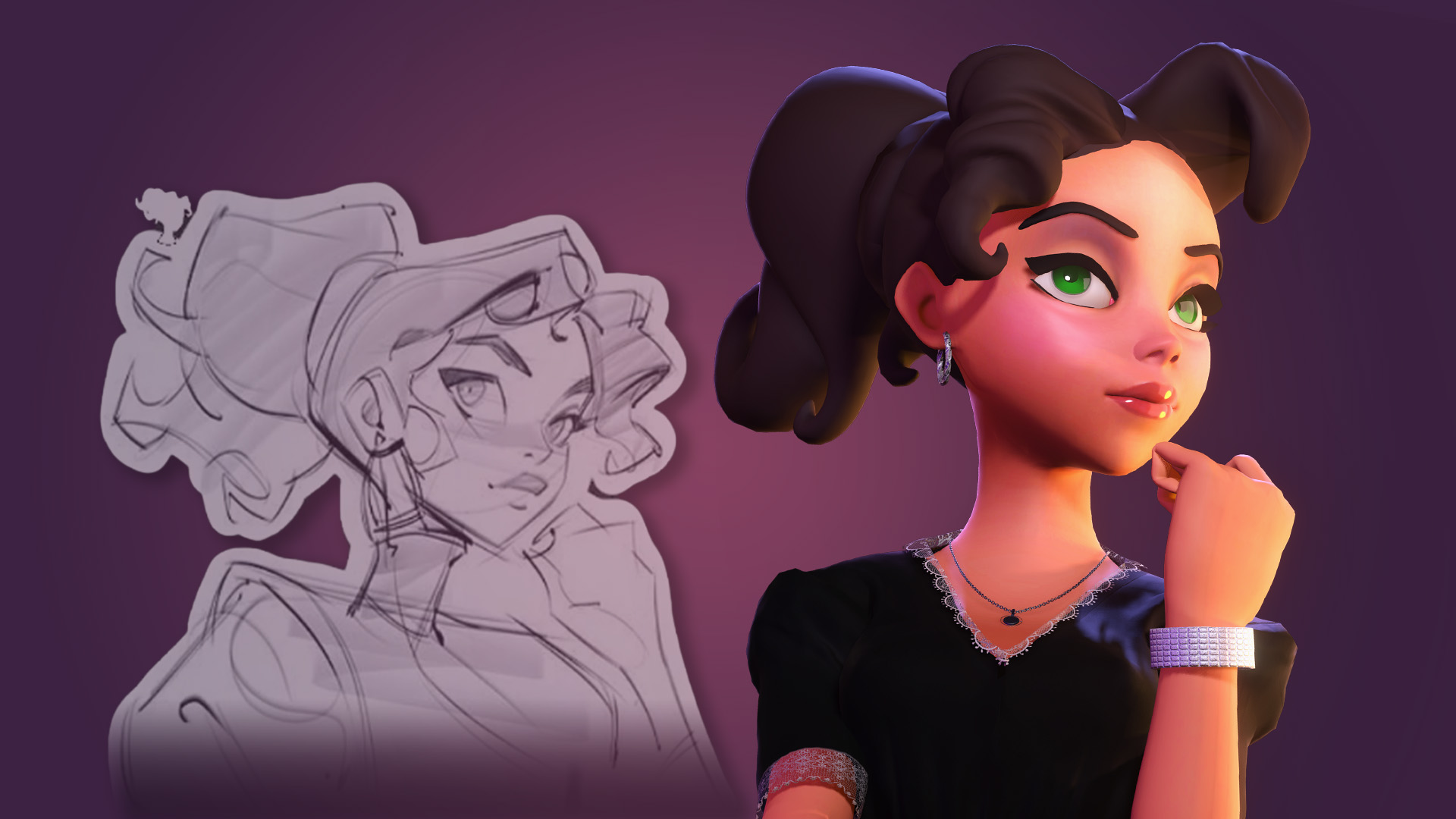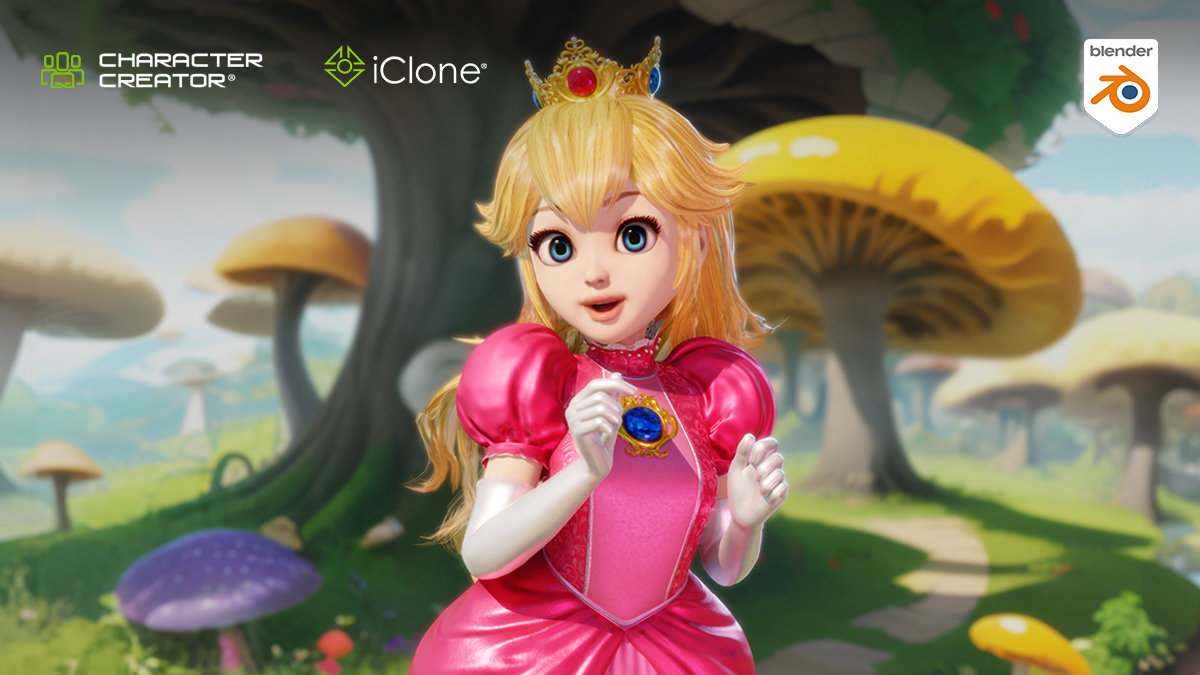

Bradley Collar
Bradley, a seasoned 3D character designer and modeler, lives and breathes the art of crafting top-tier assets for games and animation. With years of experience as both a freelancer and a contributor at Bungie and Electronic Arts, he has honed his skills across various domains: from digital sculpting and character modeling to creature design, 3D visualization, rendering, and texturing.
Why I chose Reallusion Character Creator and ZBrush Pose Tools
I embarked on the Guyver project to explore what Character Creator Pose Tools can really do. Posing hard surface objects in a way that ensures correct deformation typically demands a deep understanding of weight painting, binding positions, and, of course, time. However, using Character Creator’s Pose tools simplifies all of these tasks and makes them genuinely enjoyable! Additionally, the Hard and Soft skinning process streamlines rigging for characters. Hard skinning is ideal for objects that shouldn’t deform, while soft skinning allows for bendable parts. Creating a character like Guyver, who wears armor but also has flexible components, becomes both fun and challenging.
Detailed Walkthrough
ZBrush Modeling

When creating most of my models, I begin by gathering references for the object, including anatomy images. Then, I embark on shaping the initial blockout. During this stage, my primary objective is to capture the essence of the character. This essence might manifest as unusual body proportions or, in the case of my current model, distinct silhouettes for the helmet, shoulders, arms, and leg armor. As I progress, I meticulously refine each section, ensuring a consistent level of finish throughout the entire character until it reaches completion.

GoZ and AccuRig
Before proceeding with rigging, I ensure my ZBrush scene is tidy by doing the following:
- Clean Up: Remove any unnecessary elements.
- Naming and Splitting: Assign clear names to objects and split them as needed. This way, I can easily select the relevant components during the rigging process.

After transferring my model from GoZ to Character Creator 4 (CC4) and positioning my guides, I proceed with the AccuRIG process. Within AccuRIG, I uncheck the ‘All Meshes’ option and instead select ‘Selected Meshes.’ The purpose behind this choice is to ensure that everything I specifically choose will be assigned the soft skinning algorithm, while any unselected elements will be categorized as ‘accessories’ or undergo hard skinning. This distinction is crucial, especially for hard armor components on my character, as it prevents undesired deformation.
After completing these steps, you’ll notice objects marked with a ‘glasses’ icon, which signifies they are accessories. Additionally, objects assigned to soft skinning will be ready. And just like that, you’re all set to begin posing!


Posing in Character Creator
Now that everything is set up, you have a couple of options for posing your character:
- Manual Posing: Select the rig and begin moving and rotating the bones manually. This approach allows for precise control over each pose.
- Pose Library: Explore the incredible pose library. Choose from a variety of animations or poses to apply directly to your model.
- Hybrid Approach: Feel free to combine both methods for maximum flexibility!
The beauty of this process, as opposed to posing in ZBrush, lies in its flexibility. You’re not committed to a single pose—you can freely explore what feels right or visually striking. Save those poses along the way and continue searching for what truly makes your character stand out. The real magic? You can reuse these saved poses on other characters! Imagine creating a fantastic pose that doesn’t quite fit your current project—no worries, save it for later use!

For this pose, I adopted a Hybrid Approach. First, I explored the fantastic animation packs available for purchase in Character Creator’s store. I selected a few fight styles and then manually customized them to achieve the unique look I desired.
For my final look, I opted to adjust everything manually. I came across a captivating pose in one of my art books that truly resonated with me. Although this approach might require some additional cleanup, it’s not a concern.

Fine-tuning in ZBrush
After finalizing my pose in Character Creator, which covers about 95% of the work, I turn to ZBrush for the remaining 5%. The advantage of using Character Creator (CC) is that it poses our character at the lowest subdivision level, preserving all the intricate high-level details. In ZBrush, my task is straightforward: I adjust and refine the shape to match the new position provided by the rig. Additionally, I address any clipping issues that may have occurred during the posing process. The end result? A fully posed model that is ready for rendering or 3D printing!


Splitting for 3D Printing
Here are some pro tips for cutting and keying a model in Zbrush for 3D printing:
- Clean Splitting: When splitting your model into parts, use Boolean operations to cut and merge the sections that need separation. Keep the connections clean to ensure easy assembly once the figure is 3D printed.
- Add Keys: To ensure proper alignment during assembly, add keys (slots or pegs) to the parts that need to be connected. These keys should have some space to account for material shrinkage and deformation.
- Edge Cleanup: Create clean edges for each part to avoid gaps and light leaks when assembling the printed pieces. Use tools like “Union Meshing” and “Sharpen Mask” to refine the edges.
- Dynamesh Unification: After splitting and keying, use Dynamesh to unify the mesh density and preserve sculpt details. This step ensures a consistent surface for printing.
Remember to consider the material properties (such as shrinkage) and test your design before printing.

Final thoughts
Since discovering and utilizing the Character Creator pose tools workflow, I’ve abandoned all other methods for posing my characters. The process is not only straightforward but also enjoyable and creatively fulfilling. I highly recommend it to anyone seeking a complete process for efficient character posing.
Follow Bradley
Learn More
Related Posts
- Motion Designer’s Powerful Tools for 3D Character Animation
- The Making of Miles Morales | Transforming 2D concept into 3D model with Character Creator ZBrush Pose Tools




